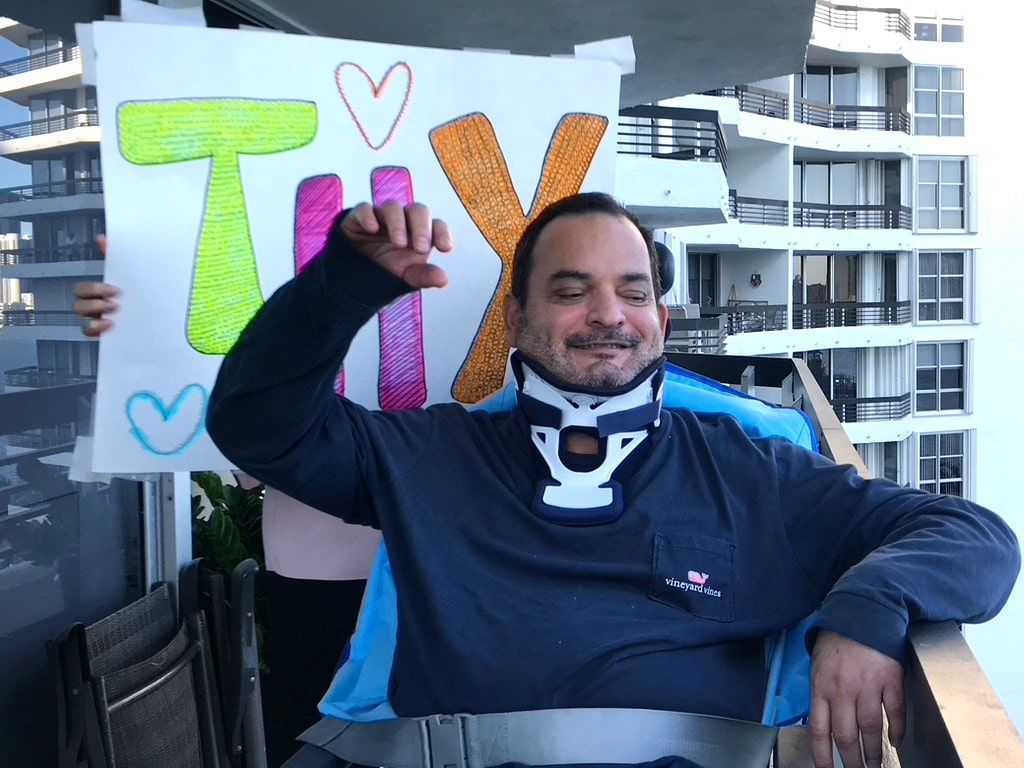Patient Information
Essential Information and Resources for Spinal Cord Injury Patients
Dear,
We understand that adjusting to life after a spinal cord injury can be incredibly challenging. But please know that you are not alone. We are here to support you every step of the way. Our community is dedicated to helping you regain your independence and embrace your new journey with courage and hope. This new chapter in your life will come with its own set of trials, but also many triumphs. You will discover strengths you never knew you had, and you will find joy in the smallest victories. Remember, every step forward, no matter how small, is progress worth celebrating. Our team, along with fellow patients and their families, is here to provide the encouragement, resources, and companionship you need. We believe in your resilience and your ability to adapt and thrive. Together, we will navigate this journey, learning, growing, and celebrating each milestone.
Understanding
Spinal Cord Injury (SCI)
A spinal cord injury (SCI) is damage to the spinal cord that results in a loss of function, such as mobility or feeling. The spinal cord is a crucial part of the central nervous system, which transmits signals between the brain and the rest of the body. When the spinal cord is injured, it disrupts these signals, leading to partial or complete loss of sensation and function below the site of the injury.
Causes
Spinal cord injuries can be caused by various factors, including:
Trauma: The most common cause of SCI is traumatic injury, often from:
- Motor vehicle accidents
- Falls
- Sports injuries
- Violence (e.g., gunshot or stab wounds)
Non-Traumatic Causes: These include medical conditions such as:
- Tumors
- Infections (e.g., spinal tuberculosis)
- Inflammatory diseases (e.g., multiple sclerosis)
- Degenerative diseases (e.g., arthritis)
- Vascular disorders (e.g., aneurysms or strokes affecting the spinal cord)
Types:
Spinal cord injuries are classified based on the location and severity of the injury.
By Location:
- Cervical (neck) injuries: These affect the arms, legs, and trunk. Injuries here can result in quadriplegia/tetraplegia, where there is loss of function in all four limbs.
- Thoracic (upper back) injuries: These primarily affect the chest and legs, often leading to paraplegia, where there is loss of function in the lower limbs.
- Lumbar (lower back) and Sacral (pelvic area) injuries: These mainly affect the hips and legs.
By Severity:
- Complete SCI: No motor or sensory function is preserved below the level of injury.
- Incomplete SCI: Some motor or sensory function is preserved below the level of injury. Incomplete injuries vary widely in their severity and manifestations.
The Road to Recovery
An overview of the stages of recovery and what to expect.
Recovering from a spinal cord injury (SCI) is a challenging journey with multiple stages. Understanding these stages helps patients and families navigate the process with realistic expectations.
STAGE 1
Acute Stage:
Timeline: Immediately after injury to several weeks
What to Expect:
- Emergency Care: Stabilizing the patient and managing life-threatening conditions.
- Surgery: To stabilize the spine, relieve pressure on the spinal cord, or repair tissues.
- Critical Care: Intensive monitoring in a hospital to address complications like respiratory issues, infections, and blood clots.
01
02
STAGE 2
Rehabilitation Stage
Timeline: Weeks to months post-injury
What to Expect:
- Inpatient Rehabilitation: Comprehensive rehab in a specialized facility with physical and occupational therapy.
- Goal Setting: Establishing realistic recovery and functional improvement goals.
- Skill Development: Learning new skills and techniques to adapt to changes in mobility and daily living.
STAGE 3
Early Recovery Stage
Timeline: Months to a year post-injury
What to Expect:
- Continued Therapy: Ongoing therapy to maximize recovery and independence.
- Adaptation: Adapting to assistive devices like wheelchairs or braces.
- Home Modifications: Making changes to ensure safety and accessibility at home.
03
04
STAGE 4
Long-Term Recovery Stage
Timeline: Beyond one year post-injury
What to Expect:
- Maintenance Therapy: Periodic sessions to maintain and improve strength and function.
- Lifestyle Adjustments: Adapting daily routines, hobbies, and social activities.
- Community Integration: Re-engaging with the community and participating in social and recreational activities.
- Psychological Support: Ongoing mental health support to address emotional challenges.
Important Considerations
- Patience and Persistence: Recovery requires patience, determination, and a positive mindset.
- Support System: A strong network of family, friends, and healthcare professionals is crucial.
- Adaptive Strategies: Utilizing adaptive strategies and technologies enhances independence and quality of life.
- Health Monitoring: Regular medical check-ups and proactive health management are essential.
Every individual's recovery journey is unique, and progress may vary widely. With the right support and resources, individuals with spinal cord injuries can lead fulfilling and meaningful lives.

Foundation Services and Resources

Support Groups
Local and online options.

Financial Aid
How to apply for assistance.

Workshops and Webinars
Upcoming events.

Mobility
Equipment & Therapy.
Inspirational Stories





